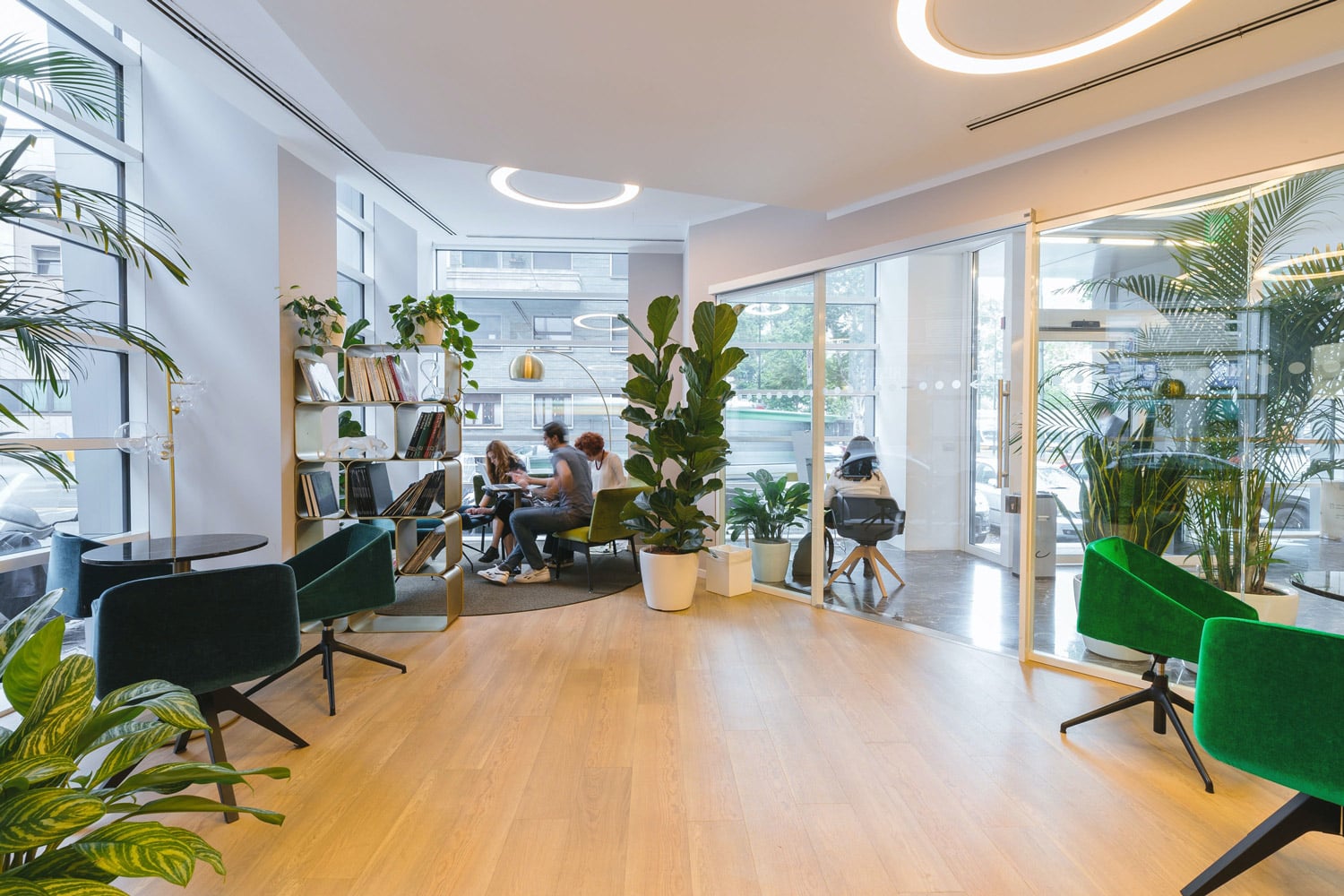30/04/2021
The COVID-19 pandemic has had a profound impact on so many aspects of our lives – not least of all in the workplace. Almost overnight, entire industries were shut down and those that continued often enacted remote working policies to keep their employees safe. According to a survey taken by the National Association for Business Economics last year, 80 percent of respondents worked for a company that adopted some form of remote work.

Broadly speaking, this transition to remote working was effective, thanks largely to the rapid adoption of digital collaboration tools. But as vaccines lead us towards a post-pandemic future and the creation of a “new normal,” many businesses will be keen to get their employees back in the workplace. While they may find that this is not necessarily easy to achieve, technology – so vital for business continuity during the pandemic – also offers a way of getting your employees safely back to their desks.
The scale of the challenge
Facilities managers and team leaders may find enticing employees back into the office is more of a challenge than it initially appeared. Many members of staff have got used to working from home – perhaps they have even set up a home office. They are now accustomed to working without a commute, enjoying a better work-life balance, and still remaining productive.
And not all of the push towards remote working is about convenience either. Anxieties around how safe it is to work from the post-pandemic office will continue even when COVID infection rates are low. Unsurprisingly, some studies suggest that as much as one-third of all work undertaken in Europe’s leading economies could remain remote once the pandemic subsides.
However, while the global work-from-home experiment appears to be successful – it has not been an unqualified one. Remote working has left many employees feeling isolated, others have experienced technical issues related to online meetings, and collaborative work does not usually go as smoothly when colleagues can only communicate through a screen. And then we have frontline workers who need to be physically present in the workplace anyway. Clearly, businesses are right to want their employees back – at least some of the time.
How to get employees back… safely:
Businesses have already shown remarkable levels of adaptability in their responses to the COVID crisis, so there’s no reason why they can’t display a similar commitment to innovation now that workers are being asked to return to the post-pandemic office. For facilities managers and business owners, policy restructuring, greater workplace flexibility, and even new technologies can all be employed to encourage your workforce to return. Here are a few measures you can implement to get your employees back:
- Put the right policies in place: The use of face masks, limiting capacity, guaranteeing the air quality, enforcing social distancing measures, and abiding by government rules around office working can all help make your employees feel more comfortable about returning to the workplace. Given that as many as two-thirds of workers are anxious about coming back into the office, communication will be key to allaying any concerns.
- The human aspect: Facilities managers will need to reconfigure the office space to allow for physical distancing without restricting opportunities for collaboration. Workplace leaders may need to re-evaluate floorplans and consider whether it would be beneficial to implement a phased return to work. Visitor management will also need to be examined.
- The technology aspect: Just as technology helped usher in remote working, it can also assist businesses as they look to facilitate a return to office work. Smart buildings, utilising cutting-edge software and sensors, can deliver safety, manage office capacity, enable flexibility and even prioritise areas for cleaning.

The role of smart technology in attracting back your staff
To understand the previous point, let’s navigate through the back to the post-pandemic office journey your staff could experience in the “new normal”:
- Planning your journey: With limited capacity in the office and a potential need to share space, like desks or meeting rooms, you may be asked to make a reservation in advance. Using a mobile app, you could check the availability of flexible desks and meeting rooms – or even parking spaces – before confirming your attendance, starting off your day in a productive and safe manner.
- At the entrance of the building: Keep workers safe by employing facial recognition technology, mask detection software, and body temperature scanners. Alternatively to facial recognition, a QR code from your mobile could be the access card for all facilities, both for regular staff and visitors.
- Going up: Smart technologies can now be used to ensure the lift to your floor arrives without you having to press a button. A combination of smart lifts, smartphones, and motion sensors will get you to your destination safely. Some smart lifts even employ ultraviolet light to disinfect surfaces automatically after each occupant has left.
- In the office: Once you’ve arrived at your workplace, smart technologies will ensure proper ventilation, based on data collected from CO2 and presence sensors, to avoid virus propagation. Plus, the use of CCTV and capacity sensors can help ensure that the number of people in a same room is meeting regulations.
- Time to clean: Last, but certainly not least, facilities managers can use smart technology to help with office hygiene. Critical cleaning management solutions based on IoT sensors can alert cleaning teams to refill hand sanitiser dispensers, inform them when trash containers need emptying and monitor traffic to the toilets to determine when they need cleaning.
The post-pandemic office
The last twelve months have been a turbulent time for employees and employers. However, by implementing new workplace guidance, making the most of everything we’ve learned in the last year, and utilising new smart technologies where appropriate, businesses can invite their staff back to the office safely and responsibly.
Working with Getronics, you’ll find a partner that can package together everything your workplace needs to transition to the “new normal” and safeguard the health of your staff, or otherwise, to take a step approach and address certain priorities, such as access control or the ventilation in certain areas. Talk to our experts today about how our Smart Spaces Solutions can bring life back to your workplace.




